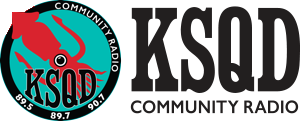
Select Page

If you live along the Monterey Bay, tune your radio dial to 90.7 FM. Check out our signal coverage map to see where our signal is strongest.
You can listen online via our web player.
Here is our donation link to donate online. To save the 3% fees for credit card you can snail mail a check to Natural Bridges Media/KSQD, PO Box 5551, Santa Cruz, CA 95063.
Thanks to our donors, we bought the license and transmitter for 90.7 FM through many large and small donations. It took almost two years of fundraising and negotiations with various entities, but we finally did it!
Funds go to Natural Bridges Media, the nonprofit set up to operate KSQD-FM. Funds will be used to help us maintain the ongoing expenses of a community radio station, including rent, internet, music licensing fees, utilities and much more. Detailed budgets are available to share, just ask.
We started broadcasting on February 15th, 2019.
We are starting out with many volunteers, and we have found a very reasonably priced location for the station. There are many other community stations around the country who have successfully implemented a scaled-down, locally-sourced model. (Two good examples are KWMR in West Marin http://kwmr.org/ and KVMR in Nevada City http://www.kvmr.org/ ).
We do! Natural Bridges Media is a new 501 (c) 3 nonprofit organization formed in December 2017 in order to facilitate the rebirth of community radio in Santa Cruz County. While individuals can’t own a radio license, a nonprofit with a board of directors can. The station will be overseen by a diverse, committed Board of Directors. Day-to-day operations will be eventually be managed by a small paid staff, and a large group of volunteers will provide their time and knowledge to make the station a success. Our goal is maximum inclusion on a mostly volunteer-staffed, locally-focused community station.
Tune in to 90.7 and find out! Community radio reflects the unique place and culture in which we live. What does Santa Cruz sound like? You will hear familiar shows from local experts you have come to love, as well as news, public affairs, and cultural programs.